How Alfie Nickerson became the poster boy for biodynamic British flowers

Simply sign up to the Sustainability myFT Digest -- delivered directly to your inbox.
The sun is rising over Burnt Fen, an arts and crafts house built in 1927, set in 280 acres of Norfolk countryside and surrounded by the romantic Broads. Alfie Nickerson, 28, comes bombing along a tree-lined lane on his trusty “gator”, wearing a colourful striped T-shirt – a girlfriend’s cast-off – and a pair of bright-orange swim shorts that have seen better days. In his mouth is a roll-up cigarette and nestled on his lap is his long-haired blond dachshund, Wolfie. Tracy Chapman’s “Give Me One Reason” is blaring out of a mud-splattered Bose speaker on the passenger seat. The vehicle rumbles over a low bridge and then hurtles at considerable speed up a hill and into a field ablaze with flowers.
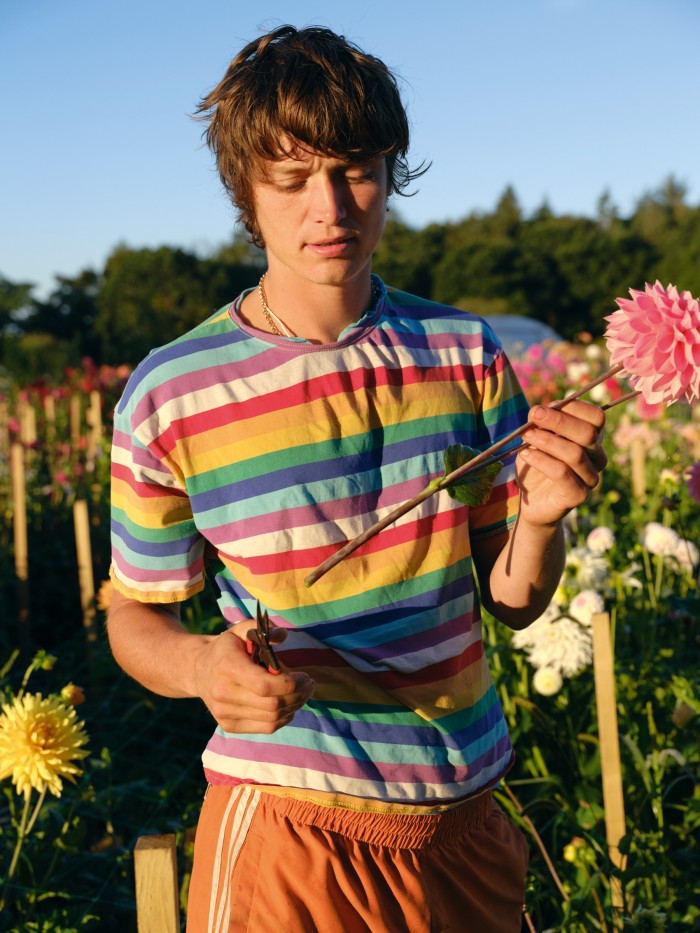
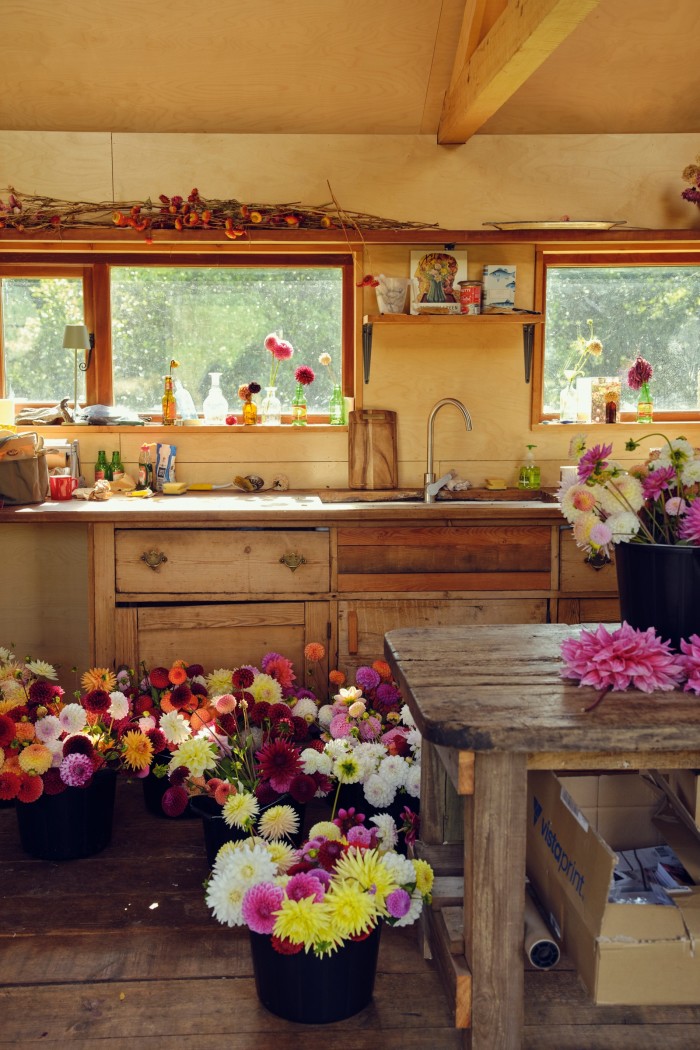
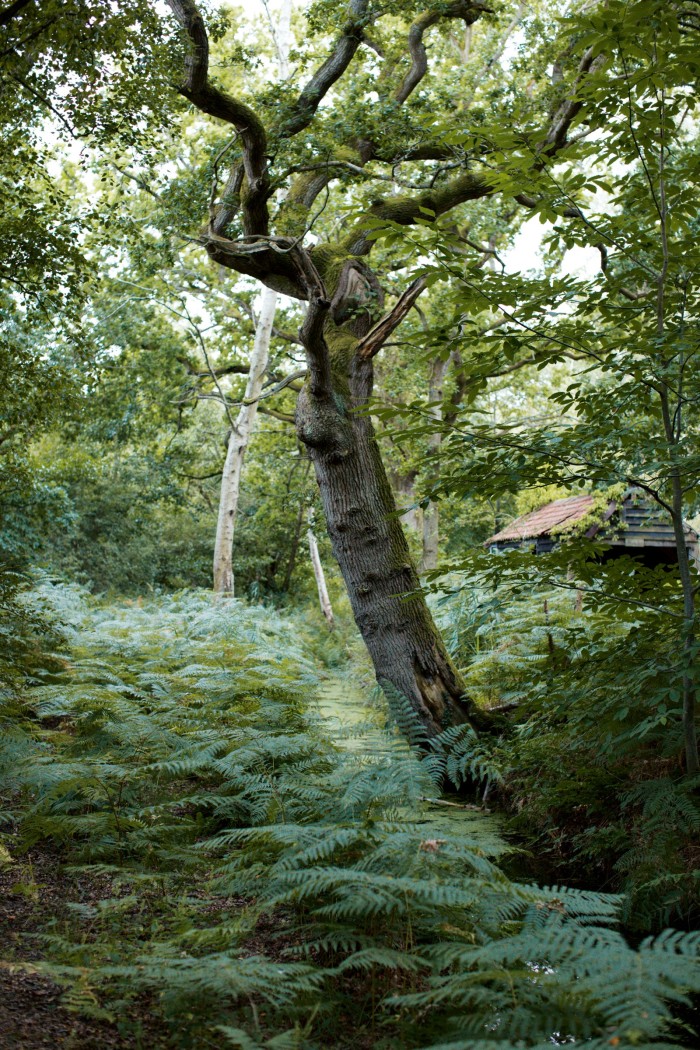
Four years ago, Nickerson decided to start growing seasonally cut flowers on three acres of the land that his family have owned for generations (his great-grandfather bought the property when he returned from the first world war). He thought it could be a fun project for weekends. It soon became a passion. “I had been working in London as a gardener since I left school, and I was getting tired of running around the city tidying up other people’s spaces,” he says.
Interested in the principles of biodynamic farming, he jumped at the opportunity to spend six weeks working as a volunteer with Jane Scotter, whose celebrated Fern Verrow, a 16-acre certified biodynamic farm, sits at the foothills of the Black Mountains in Herefordshire. “I went with a friend – we stayed in tents. I think I spent some of the coldest nights of my life there,” he says. “But it was an incredible experience. I learnt about the principles of biodynamic growing, but most of all I learnt about showing up in the pissing rain, that no day ends until the work is done, and if this is what you want to do in life, there is no such thing as a sick day.” Nickerson and Scotter bonded. “We worked like dogs but also had great fun.”
Nickerson self-funded his burgeoning flower company with income garnered from modelling work. In the early days, he would fill his car with buckets of flowers and drive to London once a week, selling them to friends and family. But as more people have started to look for natural, consciously sourced flowers that are perhaps a little “perfectly imperfect” (as they have in the world of food), the business has grown. Today he sends his flowers out for next-day delivery by DPD across the UK. Prices are £45 for a generous bunch, dropping to £40 including delivery for those with a subscription.
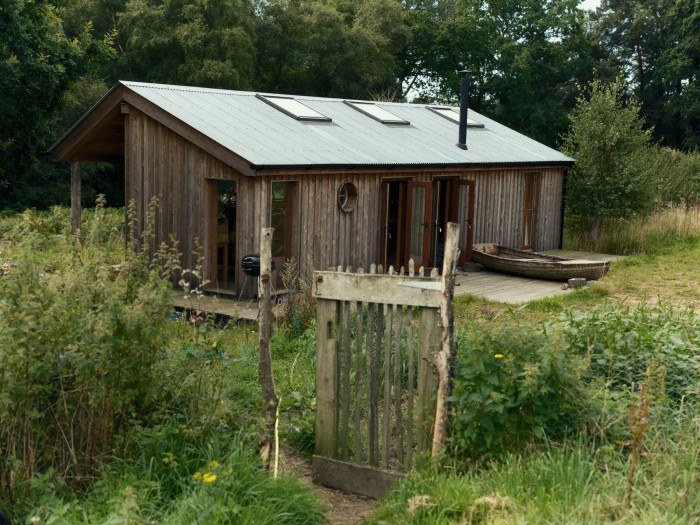
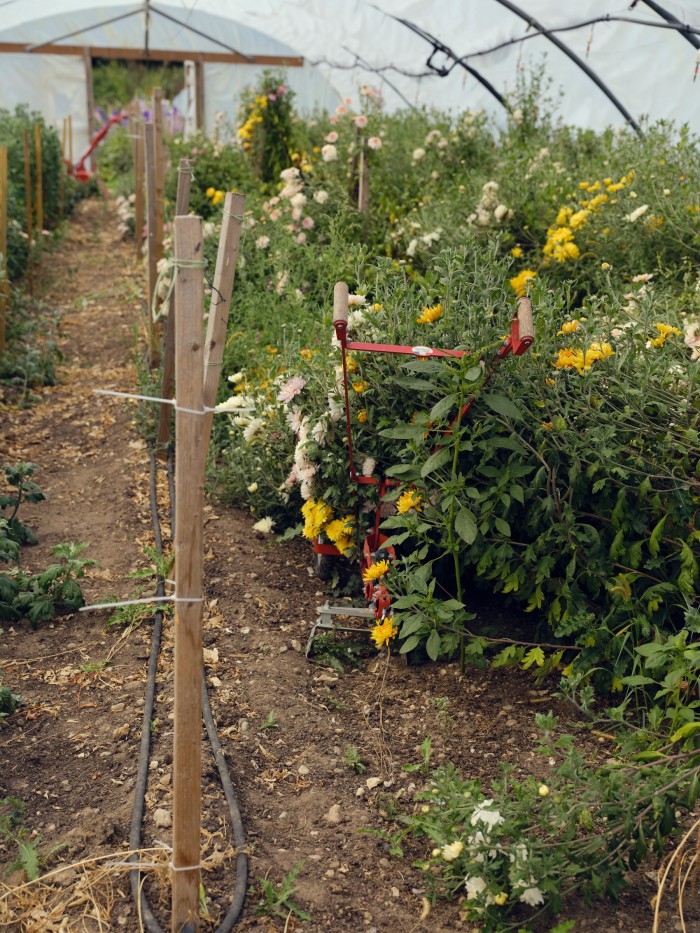
Nickerson and co-worker Katia El-Fahkri sow 20,000 flower seeds every season from nearly 100 varieties, sending out mixed bunches of blooms from April: glorious bunches of cosmos, dahlias, delphiniums, loosestrife, roses, astors, iris, verbena, zinnia and mint. By July the pair cut up to 2,000 dahlia stems a week. The season runs until November. “By the end, I’m exhausted!” he laughs.
Petersham Nurseries in Covent Garden is a regular client; florist Julia Campbell-Gillies buys at least two-thirds of the restaurant’s flowers from Burnt Fen. “We are known for having a huge amount of flowers, and for loving things that look wild and natural,” she says. “I prefer the aesthetics of more dynamic and diverse shapes and styles. I don’t know if it’s because Alfie works with biodynamic principles, or if the soil and the climate in Norfolk are just extraordinary, but often in the past when we have bought British it was all a bit short and didn’t really last. But Alfie’s flowers grow very tall and last a long time.”
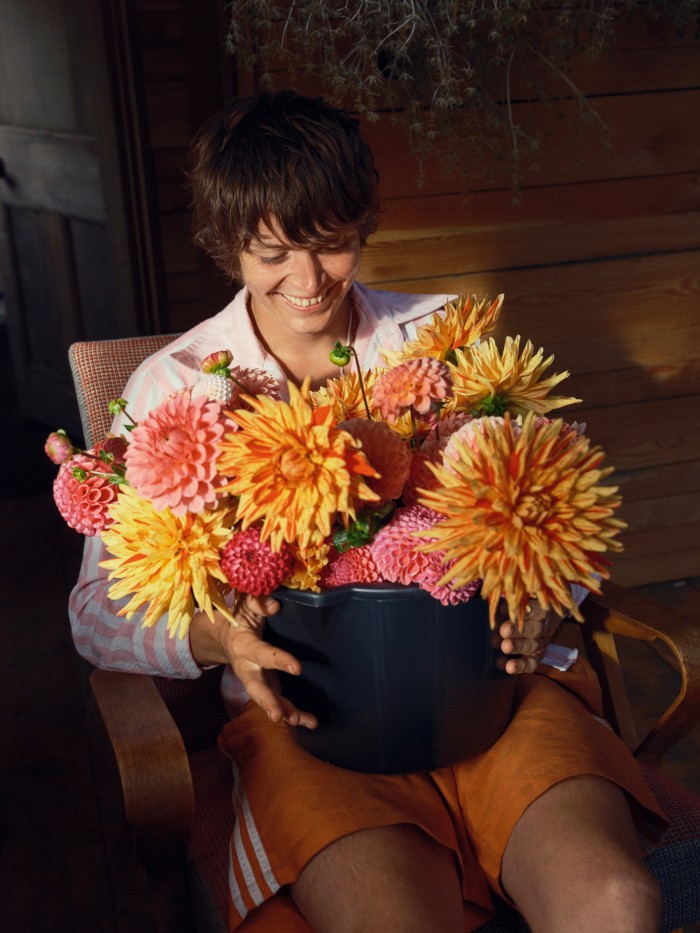

Perhaps it’s because it’s not just about the flowers. “I wanted to create a diverse and vibrant ecosystem that supports not only bees but all forms of wildlife,” he says. “The only bug I’m not a fan of is a slug.” One of the first things he did was to build natural beehives (he doesn’t collect the honey). “Now they are everywhere, buzzing about with butterflies and ladybirds – all of whom help to keep pesky aphids at bay.”
Nickerson is ambitious. Every week he posts creatively styled Instagram posts starring himself and Wolfie with his blooms – think lying in a rowing boat, surrounded by dahlias, hanging upside down with his head in a sea of stems or sitting in a darkened room dressed in a pinstriped suit puffing on a cigar, his flowers illuminated in the candlelight. He is no stranger to the power of styling: his mother, Jayne Pickering, and his aunt Camilla Nickerson are both successful fashion stylists. “I get an amazing response every time I post. People seem to respond to the fun I have with my flowers – but also because they are grown in such a sustainable way and in the UK,” he says.
Fashion brands are buzzing around him. He is currently in talks about a potential collaboration with luxury swimwear company Orlebar Brown, and there is also the possibility of a documentary.
As the day ends at Burnt Fen, Nickerson heads over to a wooden cabin adjacent to the flower field. Lined in silver birch and larch and built in six weeks with local craftsman Jack Coleman, it serves as the business HQ. At a large 600-year-old Welsh table sourced by his father, interior designer Willie Nickerson, he and El-Fahkri arrange bunches, and wrap and box them in brown paper decorated with illustrations of ladybirds, bees and worms. “I want our customers to know what we stand for. As they open the cardboard boxes, they’ll see illustrations of soil and insects along with a note informing them ‘No pesticides. May contain bugs’.”
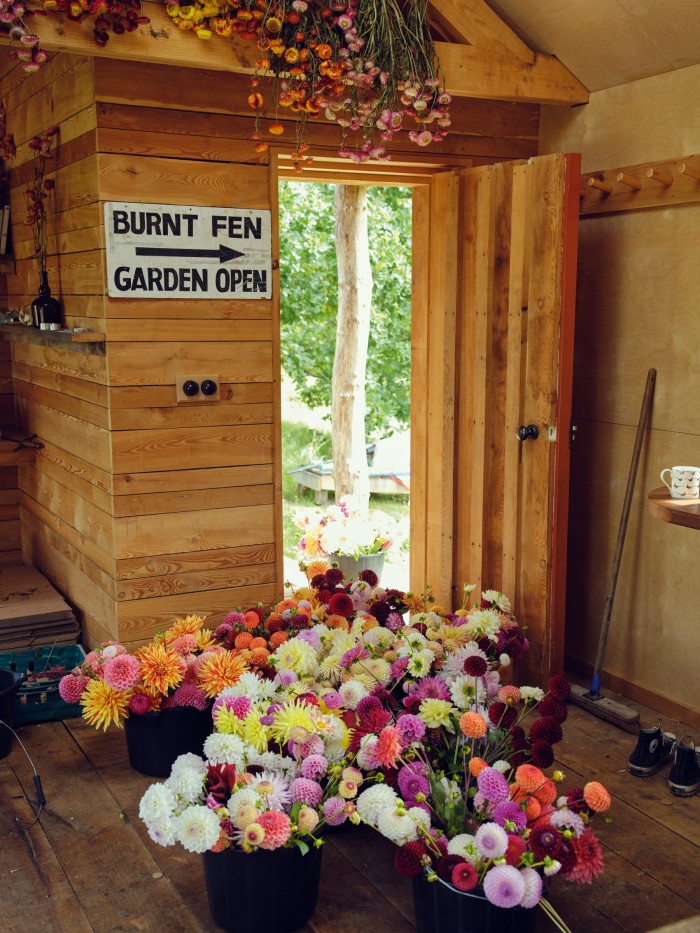
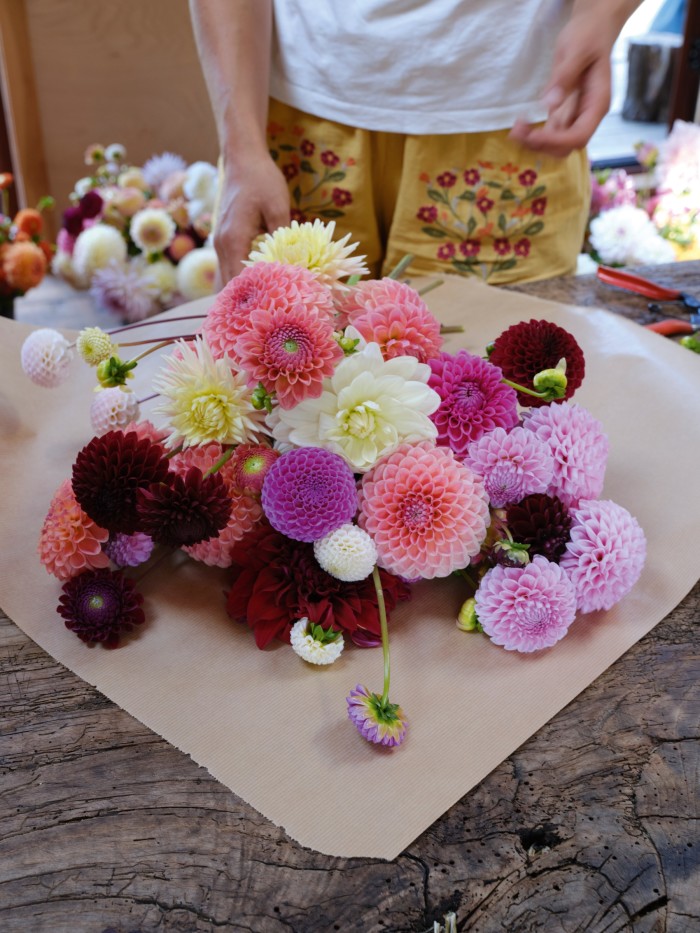
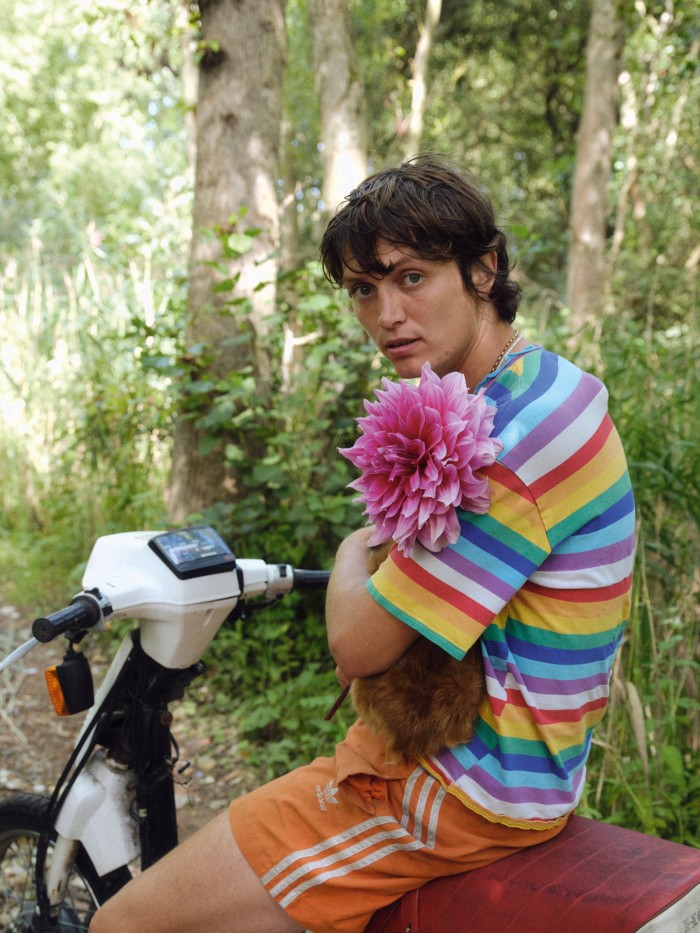
Close to the office is the pen where he keeps his pigs, Hilda and Shine (named after the oldest rose in the world), and next to that, his beloved wormery. A vermi-compost bed, it is fed by manure collected from his aunt Ann’s neighbouring alpacas, leftover cardboard and flower offcuts. “This stuff is amazing!” He exclaims as he collects some of the liquid it produces. “It’s full of nutrients and beneficial microorganisms and helps create a rich organic soil. I call it worm juice. I may have to bottle and sell it…”
His mission is to embed his endeavour in the natural world. “We are trying to create an ecosystem that can sustain itself. So if there are nettles around the beds, that is a good thing – they are home to the ladybirds in the winter. We also plant trees in the middle of the flower beds. It’s agroforestry – the idea is that the trees can become food for the insects and give nutrients to the flowers growing around them. This kind of wild environment is integral to everything I’m doing here. Everything connects.”
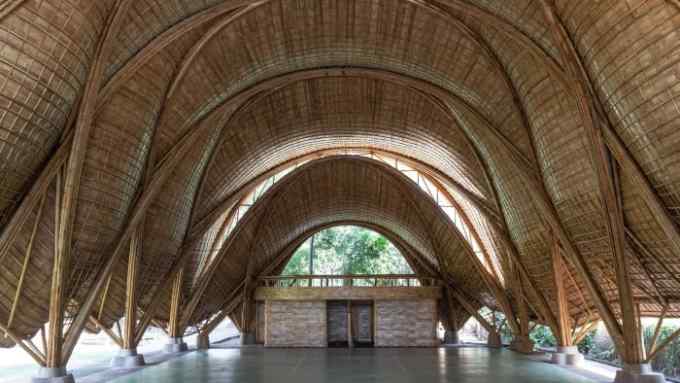
Comments